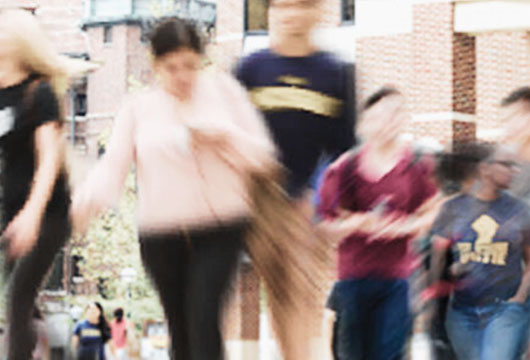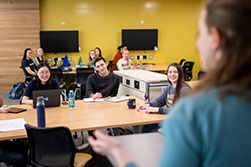| Facilitating Challenging Conversations in Your Classes Wed, 09/10/2014 Students and faculty return to campus this fall amidst significant turmoil around the world. Whether it’s protests against police violence in Ferguson, Missouri, wars in the Middle East and Ukraine, or the Ebola outbreak in West Africa, distressing events far from home and close to it are likely to be on students’ minds—and therefore to enter your classrooms, whether you anticipate them or not. Because these issues in so many ways relate to differences in social identity and power—and because so many of our students have personal or family connections to places experiencing crisis—these events may also influence ongoing conversations about the campus climate here in Ann Arbor.
None of these are simple or easy topics to talk about. Over many years, CRLT has developed guidelines for discussing difficult topics to support teachers in facilitating such conversations in classrooms across the curriculum. If you want to raise such topics in your classes in order to explore connections between course material and contemporary events, you can find strategies for planned discussions of high-stakes topics. Other resources offer you ways to prepare for and respond to challenging conversations that emerge when you haven’t planned for them. Some strategies highlighted on these pages--useful for either planned or spontaneous discussions--include: Read more |
| Celebrating 10 Years of CRLT-Engin Wed, 09/10/2014 "I couldn't have gotten tenure without good student evaluations, which CRLT-Engin helped make happen. Thanks!" "Engineering education research activities are clearly flourishing at U-M, and your leadership is one of the major reasons why!" "To me, one of the great things about CRLT-Engin is that it quietly and consistently gives faculty opportunities to reflect on and improve at teaching, such that the opportunities are there when faculty are ready for them." Faculty testimonials such as these show the powerful impact that the Center for Research on Learning and Teaching in Engineering (CRLT-Engin) has had during the 10 years since its founding. Started in 2004 as a partnership between CRLT and the College of Engineering, CRLT-Engin has focused on supporting excellent teaching as well as furthering engineering education research at U-M. The center is staffed by consultants with expertise in both engineering and educational development, and it provides what one faculty member describes as "a space in which engineering education research is supported and celebrated"--and the insights of that research are translated into more effective teaching across the College. As another faculty member testifies, "On several occasions CRLT-Engin encouraged me to do what I thought would be impossible; I trusted their advice and implemented active learning in my large class. Now I do many things differently than before, with greater effectiveness and more enjoyment for students." Read more |
| The UMAY Survey: Understanding Undergraduate Experiences at U-M Mon, 04/21/2014 How do undergraduates experience the learning environment and broader campus climate at U-M? Of course, teachers regularly gather information about such questions from their direct interactions with students. The campus-wide UMAY survey offers a broader, systematic way of collecting and tracking student perceptions about their learning and their more general experience of U-M. In this post, guest blogger Karen Zaruba of the Office of Budget & Planning describes some of the rich findings generated by the survey and highlights reasons you might encourage your students to complete it. Have you heard about the University of Michigan Asks You (UMAY) survey? Just as important: Have your students heard about it?
The survey questions cover a lot of ground: self-assessment of skills and growth since enrolling, perceptions of climate, use of time, academic engagement, and goals. Students report on their satisfaction with their experience in the classroom, academic department, and on campus overall, including their participation in research, study abroad, internships, service learning, and other high-impact learning activities. There are over 600 items in all (though no student has to answer all of them: some questions are randomly assigned). This broad range of items enables us to assess program effectiveness, benchmark with other universities, and gather unique insights about students' experiences. To get a flavor of the kinds of things we can learn, here are some findings from the 2013 UMAY survey:
Read more |
| Slides that Promote Student Learning Thu, 03/27/2014
In this CRLT video, Assistant Director Rachel Niemer identifies some common problems with instructors' use of presentation slides and provides concrete strategies for effective slide design, drawing insights from research on how attention, memory, and recall work in a learning environment. One of the most popular videos on our website, her presentation on "PowerPoint Supported by the Science of Learning" offers guidance on:
For more on teaching strategies informed by the science of learning, click on the tag below. Read more |
| Motivating Students to Learn Mon, 03/17/2014 As memories of Spring Break fade and we head into the final stretch of winter term, it's a great time to think about student motivation. How effectively are your courses engaging your students and motivating them to learn?
While it can sometimes feel that students simply choose to be engaged or apathetic for their own reasons, the research on motivation clearly indicates that instructor choices significantly affect students' investment in learning. And motivation plays a key role in how effectively students master course material. As Susan Ambrose and her co-authors argue in How Learning Works (Jossey-Bass, 2010), research shows that people are motivated to learn when they:
What teaching strategies do these motivational factors suggest? To help students appreciate the value of the learning goals in your course, you can: Read more |
| Creating the Learning in Experiential Learning Mon, 03/10/2014 Engaged learning is a key focus of University of Michigan's teaching efforts, given the power of active, immersive approaches for promoting student learning. Service-learning, fieldwork, and other forms of what is often called 'experiential learning' allow students to make discoveries about course content, connect realms of knowledge and experience, and think critically about their own actions.
Given the practical and logistical challenges often involved in setting up such experiential learning opportunities, how can instructors maximize the student learning that results? Several questions can be useful to consider carefully while planning such a student experience: What kinds of preparation will help students reap the greatest learning rewards of such activities? How can an instructor best connect an immersive activity to the learning goals of the course? How can the teacher effectively prompt students to reflect on their experience to promote learning?
At the U-M School of Nursing, Clinical Assistant Professor Michelle Aebersold has led the way with integrating a powerful form of experiential learning—care for simulated patients—into the undergraduate curriculum, paying careful attention to all of those questions. In this video, Aebersold explains how she structured the simulations to enable nursing students at the Clinical Learning Center to practice key skills and apply their knowledge in a realistic but controlled environment. In these exercises, a few students interact with a state-of-the-art, high-fidelity mannequin or live simulated patient while instructors behind a two-way mirror control the patient responses (breathing and heart rate, for example). Classmates observe the activities through live closed-circuit video.
Discussing the key components that make these simulations powerful learning activities, Aebersold highlights three elements that research supports as good practice for any kind of experiential learning:
Read more |
| Peer Instruction: Using Pairs to Engage All Students Fri, 02/28/2014 At his recent presentation in the Michigan League ballroom, Harvard physics professor Eric Mazur engaged the 250-person audience in an active learning exercise. An expert on the use of peer instruction in college courses, Mazur wanted the many teachers present to experience the power of this pedagogical strategy from a student perspective. So, using an example of question-based instruction from his own field, he provided a very brief explanation of thermal expansion, posed a multiple choice question that required application of the concept, and then guided those present through a 4-step exercise:
The second set of answers was significantly more accurate than the first. Such a result generally follows such a peer instruction protocol, as much research has shown. Why? Through discussion, students shift their focus away from the answer itself and toward the thinking behind the answer, and those with the more accurate logic are generally able to make a more persuasive case. The demonstration also powerfully illustrated how such a technique can engage students emotionally as they become personally invested in learning and understanding the correct answer. The discussion created remarkable buzz in the room about thermal expansion--a topic that Mazur noted would unlikely generate such excitement if simply explained in lecture format. (You can get a sense of that buzz by watching a video of the event.) In discussing the peer instruction technique, Mazur highlighted several strategies that can help engage all students in active learning, even in a very large course. These included: Read more |
| Creating an Identity-Safe Classroom Mon, 02/24/2014
How can we promote academic success for all students who enter the University, particularly those students from disadvantaged backgrounds? How can we help students overcome their own anxiety about achievement and get past “stereotype threat?” How can we increase retention rates--both for particular majors and at U-M generally--by encouraging students’ to see their abilities as malleable, rather than fixed? In early February, U-M Department of Psychology faculty member Bill Gehring addressed these topics at an LSA faculty seminar on Diversity and Climate. His research-based strategies can provide direction for instructors in all fields to enhance diversity and academic success at U-M. In his presentation, Professor Gehring described four evidence-based interventions that work to create “identity-safe” classrooms: (1) Seeing Students Holistically: It is important for faculty to recognize that students’ performance in class can be affected by many factors beyond intelligence. For example, Professor Gehring’s research on students in his Psychology 111 course found that students’ motivation to do well was positively related to their performance on exams, while their anxiety about testing was negatively associated. To increase motivation, faculty can help students set goals for their learning, and to decrease anxiety, more frequent, lower-stakes assessments may help. Other “non-cognitive” factors related to performance include discipline (i.e., the ability to resist distractions and procrastination). To reduce distractors, Gehring recommends that students not bring laptops to class, as his research finds a statistically significant decrease in exam grades among students who almost always bring their laptops, compared to less frequent users. (2) Framing Disappointment: The first undergraduate year can be a struggle, given that many students come into U-M at the top of their classes yet underperform relative to their expectations. (Incoming student survey data from the Cooperative Institutional Research Program indicate that 75% anticipate having at least a “B” average.”) Similarly, many students experience doubts about making friends and fitting in socially. Read more |
| Congratulations to the 2014 Thurnau Professors! Fri, 02/21/2014 The U-M Regents have announced six new recipients of the Arthur F. Thurnau Professorships. CRLT congratulates these outstanding teachers on this recognition of their remarkable contributions to undergraduate education here at Michigan. The new Thurnau Professors are:
More information about each new Thurnau Professor can be found in this University Record article. You can also learn about some of their outstanding teaching on the CRLT website. For instance, we feature Melissa Gross's innovative use of online collaboration tools here and Anne McNeil's Wikipedia project here. Congratulations to all of these teachers for this well-deserved honor! Read more |
| Flipped Classrooms: New CRLT Resources Thu, 02/13/2014 Whether you're wondering what the "flipped classroom" conversation is all about, or you've been flipping your own classes for years, you'll find helpful resources on our new pages on "Flipping Your Class."
Our new pages are focused on helping you determine what such a shift--which, depending on your current practice, might be subtle or radical--might look like in your classes. And we emphasize that flipping can make great use or no use at all of instructional technologies. Key topics these pages focus on include:
We also answer some commonly-asked questions about flipping. As always, if you have additional questions that aren't answered on these webpages, you are welcome to schedule a consultation with a member of the CRLT staff. Read more |




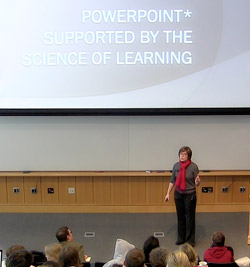 If you teach using presentation software such as Google Slides or PowerPoint, do you ever wonder whether your slides are more of a distraction than an aid to learning? At CRLT, we regularly consult with instructors who want to maximize the instructional value of their slides but aren't sure how to do so.
If you teach using presentation software such as Google Slides or PowerPoint, do you ever wonder whether your slides are more of a distraction than an aid to learning? At CRLT, we regularly consult with instructors who want to maximize the instructional value of their slides but aren't sure how to do so. 
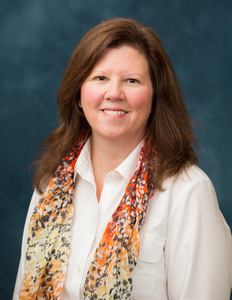


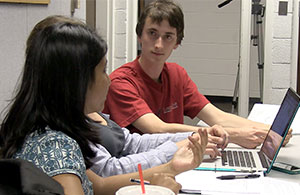 The most common definition of a flipped class is one in which conventionally out-of-class activities are swapped with conventionally in-class activities. In many courses, a traditional model involves content-delivery during lecture followed by student practice at home. In a flipped model, students are introduced to course content before class, and classroom instruction time is used to guide students through the kinds of practice and skill-building opportunities that traditionally were assigned as homework.
The most common definition of a flipped class is one in which conventionally out-of-class activities are swapped with conventionally in-class activities. In many courses, a traditional model involves content-delivery during lecture followed by student practice at home. In a flipped model, students are introduced to course content before class, and classroom instruction time is used to guide students through the kinds of practice and skill-building opportunities that traditionally were assigned as homework.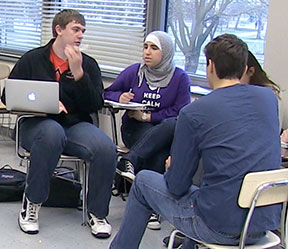 ve
ve